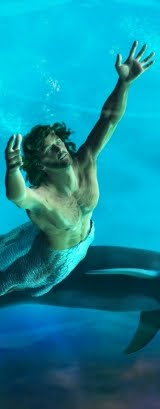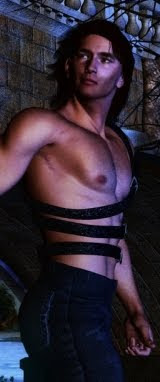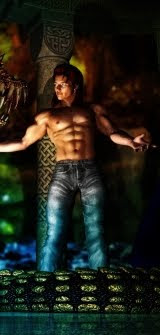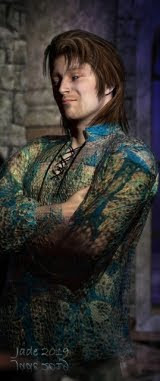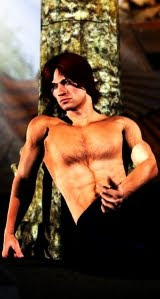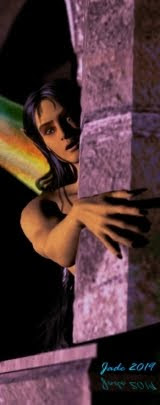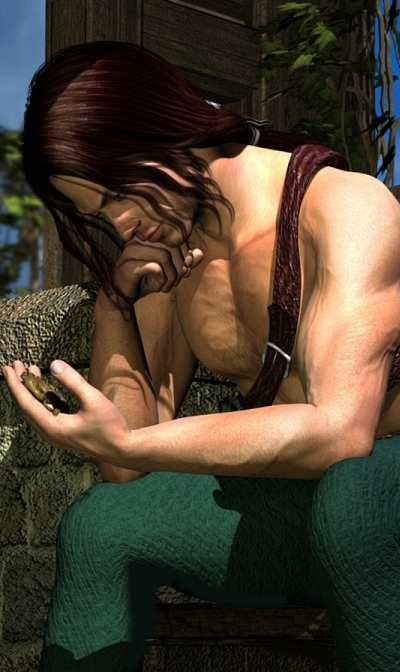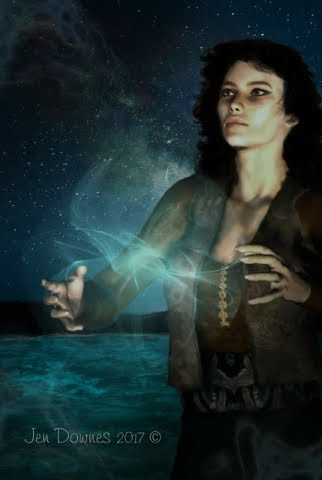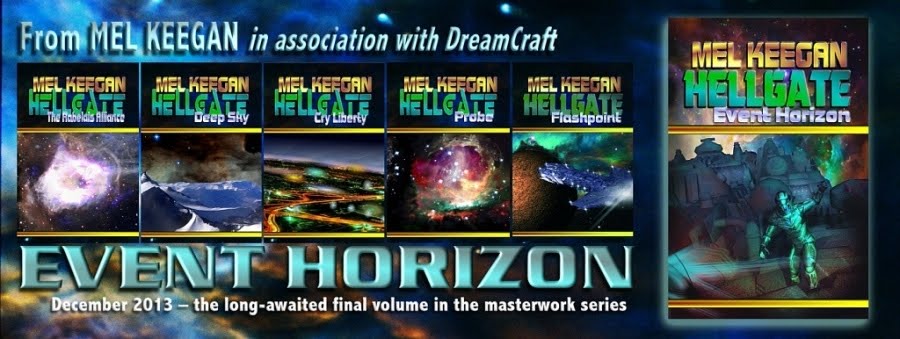click to see all images at large size...
Just puttering today, because my health has gone down the gurgler. Again. And this time it's my own fault, so ... grrr. Anyway, I thought, what the hey, why don't I rest up and putter with some art? And here it is.
Top pic: it has been said that if God wanted to avoid the problem completely, he ought to have created Adam and Ed, not Adam and Eve. The fact is, he did. You want to guess what happened next? (It's all the snake's fault, right?) So here you go: Male Nude: Adam and the Snake. Or is it Ed and the snake? That's the LightDome Pro sky dome, but I set the lights myself. Loads of props, and tons of overpainting in Photoshop. See it big ... nice effect.
Second pic: colony world, in the style of Chris Foss. When I was a kid, Chris Foss was my #1 favorite artist. I used to drool over his work, and wish I could do that stuff. Lately, I've been playing a lot with spaceships, and even thinking of getting one of the organic model making programs, so I can actually make the models as well as pose, render and paint them. This sort of shot is kinda where my brain is going. There's a lot of painting on this picture, and it was done in three programs, staring with the backdrop, which was rendered in Vue by Dave:
Then I used a model from DAZ, plus a model from Rendrosity, plus an OBP model that was exported out of Bryce as an OBJ that could be imported into DAZ, and the shot itself was rendered in DAZ (in about five minutes flat, after an hour of setting it up, complete with the atmospherics). I put a small craft in the foreground -- that one was a freebie on one of the CD-Roms attached to an issue of ImagineFX magazine; and in the background, a ginormous model that came from Renderosity about 18 months ago, and which I couldn't even load into DAZ studio before last Boxing Day and the advent of The Mighty Thor, as I call my art computer. Neat. Then the render was shipped out to Photoshop, and painted, and painted, and painted, with .abr brushes and good old fashioned brushes. Neat!
So, not feeling so brilliant and spinning my wheels today, I thought I'd go over to DAZ and see if I can find some really fantastic trees that would render up looking a bit more realistic -- 3D trees usually have leaves the size of hubcaps or tea trays, and about 10% as many as they should have. They're one of two elements that always make a 3D shot look fake (the other being human head hair ... the toupees are still not really good enough to pass muster). And what should be right there on DAZ's homepage?
Michael 5 just made his debut. Check him out in these catalog images:
Well, now. Hmmm. If Michael 5 were a free download like all the previous Michaels, I'd be giving him a shot right now, but he's expensive. And he's an "add on" for Genesis ... which means he only works in Studio 4, which is an interface I hate. Also, there's a very limited number of skinmaps and toupees available yet for M5, so there's nota whole lot you can do with him. And then there's the little fact that none of the M4 costumes and toupees are going to fit M5, so you'd have to buy everything over again...
Is Michael 5 so much better than Michael 4 that I'm ready to spend about $500 on costumes, hair, skinmaps, and sweat my way through the stupid/horrible/aggravating Studio 4 interface? Hmmm. On the basis of what I'm seeing here, I'm not 100% convinced:
...that's very plastic-looking, and that physique is more of a sophisticated, upmarket digital 'toon than a real guy (over-pumped muscles, totally ripped, yet no veins anywhere to show for the intense effort, and not a hair on his bod ... means he looks artificial). I have a feeling that it's not so much the base model itself, it's how clever you are with posing and rendering it. The Genesis figure is superior in the fact that it doesn't crush and buckle and the joints when you pose it ... but there are loads of "fixes" for the generation 4 models which get around this problem. Newbies will probably get into less trouble with Genesis figures, because they don't need the fixes. And anyone joining the club right now will be starting off with Studio 4 and Michael 5, so they'll be in at the "off," I guess. But I think I'll wait a wee while. See the Michael 5 reviews as people work with him, let the inventory of accessories, toupees, skins and so on, begin to grow, before I shell out some big money and change to an interface that, frankly, I hate. I use it only as the bridge to get my work into Lux/Reality...
So for the time being, let me see how clever I can be with Michael 4 and my own skinmaps, and Lux --
And on that note ... see you soon, with more.
Jade, April 30





















